Yes. It is.
Here is the code. DATETIME is intepreted as the data type RAW.
std::vector<std::vector<std::string>> getDatabaseValues(const char tableName[]) {
std::vector<std::string> values;
std::vector<std::vector<std::string>> table;
if (isConnectedToDatabase()) {
// Select only the first row
std::string query = "SELECT * FROM " + std::string(tableName);
mysqlx::SqlResult result = connection->sql(query).execute();
int columnCount = result.getColumnCount();
if (result.hasData()) {
mysqlx::Row row;
while (row = result.fetchOne()) {
for (int i = 0; i < columnCount; i++) {
switch (row[i].getType()) {
case mysqlx::common::Value::UINT64:
values.push_back(std::to_string(row[i].get<uint64_t>()));
break;
case mysqlx::common::Value::INT64:
values.push_back(std::to_string(row[i].get<int64_t>()));
break;
case mysqlx::common::Value::FLOAT:
values.push_back(std::to_string(row[i].get<float>()));
break;
case mysqlx::common::Value::STRING:
values.push_back(row[i].get<std::string>());
break;
case mysqlx::common::Value::RAW:
mysqlx::bytes data = row[i].getRawBytes();
const mysqlx::byte* first = data.begin();
int lengthOfData = data.length();
switch (lengthOfData) {
case 10: // DATETIME(6)
int year = (first[1] << 7) | (first[0] & 0x7f);
int month = first[2];
int date = first[3];
int hour = first[4];
int minute = first[5];
int second = first[6];
int microsecond = (first[9] << 14) | (first[8] << 7) | (first[7] & 0x7f);
char text[20];
sprintf(text, "%i-%i-%i %i:%i:%i.%i", year, month, date, hour, minute, second, microsecond);
values.push_back(text);
break;
}
}
}
table.push_back(values);
values.clear();
}
}
}
return table;
}
Here is the theory

https://dev.mysql.com/doc/dev/mysql-server/latest/group__MY__TIME.html#datetime_and_date_low_level_rep
